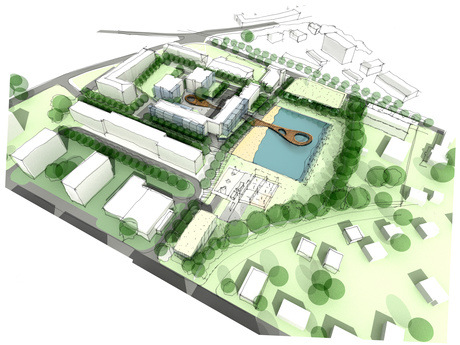Greener, cooler cities

The Cooperative Research Centre for Water Sensitive Cities (CRCWSC) has welcomed the federal government’s plan to make Australia’s cities greener and cooler.
In a recent speech to the Sydney Business Chamber, Acting Cities Minister Greg Hunt acknowledged that Australia needs “sustainable, green cities with improved amenity for a more liveable environment”.
“Green cities — cities with high levels of trees, foliage and green spaces — provide enormous benefits to their residents,” Hunt said.
“They can improve the quality of air in our cities by absorbing some types of airborne pollutants, reduce soil erosion, minimise water run-off and limit the amount of particulate matter entering our waterways; and increase urban amenity.”
Hunt noted that increasing the greenery in our cities would help to decrease extreme heat, fighting the effects of heat-absorbing roads and other surfaces as well as urban canyons trapping hot air. With this in mind, he said, “We will work with Australian cities to set decade-by-decade goals out to 2050 for increased overall tree coverage.
“We will also look at building rooftops with green cover which improve both amenity and, as Singapore has shown, can improve value and quality of life as well as operational efficiency.”
CRCWSC urban climate researcher Professor Nigel Tapper, from Monash University, said there is strong evidence that a green, leafy park, tree-lined street or urban waterway could drop the local temperatures by several degrees.
“This cooling is extremely important for reducing heat-related deaths, particularly during the very hot days of the year, which we’re seeing more often and for longer periods nowadays,” he said.
Hunt added that further opportunities exist to improve in areas such as urban water systems, stormwater, ocean outfall and energy efficiency. The CRCWSC’s acting CEO, Professor Jurg Keller from The University of Queensland, was keen to stress that water could play a key role in making cities and towns more liveable.
“Trees and green parks need water,” Professor Keller said. “They save energy, improve our comfort and foster a social and active lifestyle — so greening our cities is critically important for our wellbeing.”
CRCWSC urban planning expert Professor Darryl Low Choy, from Griffith University, said it is important to incorporate water into all facets of planning — from strategic regional and metropolitan scale plans, through to district and suburban plans, right down to subdivisional and site-scale plans.
“This enables cities to maximise the benefits of all sources of water, including stormwater, groundwater and new water supplies such as desalination and water recycling,” he said.
“If water is added as an afterthought in the planning process, we miss major opportunities created by the integrated approach.”
Professor Keller concluded by saying the CRCWSC is keen to work with the government on its efforts to create greener, healthier cities.
“Delivering green cities requires integrated and coordinated action by councils, urban water authorities, state governments and private industry, so it’s encouraging to hear that the federal government will develop a vision for greener Australian cities and work with the states to implement this vision,” he said.
Sustainability in 2026: what's next for Australian businesses?
No longer is it just about reporting; it's about using these frameworks to drive meaningful...
Net zero or 1.2 million homes: trade-off or win-win?
The housing accord's ambitious goal of building 1.2 million homes by June 2029 could impact...
How mandatory climate reporting is raising the bar for corporate leadership
The shift towards mandatory climate-related financial disclosures is transforming how...










